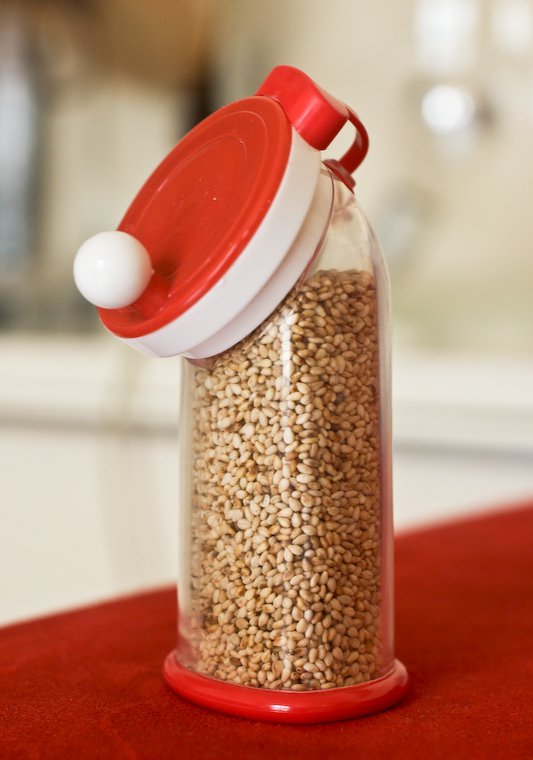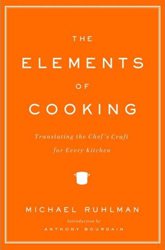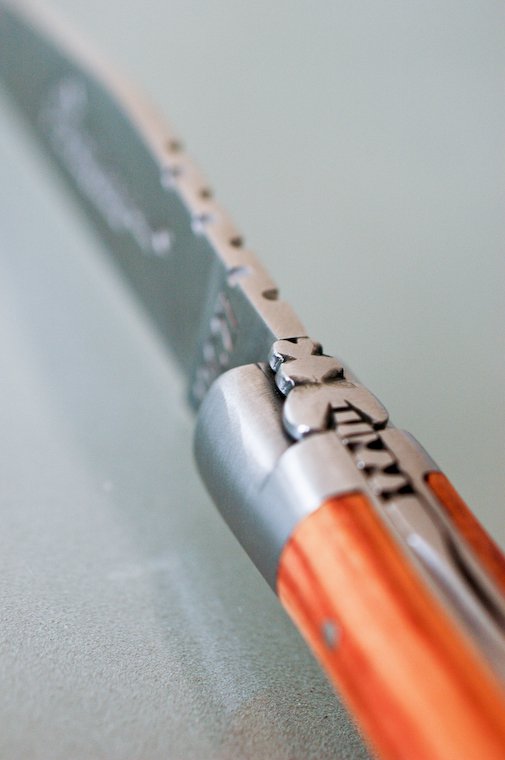
[Looking for Part I and Part II?]
Sharp things
I am not a knife geek, so you won’t find any opinionated, my-knives-are-holier-than-thine talk here. The three simple pointers I can share are: 1- you should first and foremost choose knives that feel comfortable, hefty (but not heavy), and well-balanced in your hand, 2- a high price doesn’t necessarily equate a high performance (see edifying rating here), and 3- less is more. Here’s my basic kit:
– A 20-cm/8-inch chef’s knife (couteau de chef), to cut, slice, mince, chop, and dice. My first was a stainless steel Dumas. Years later I won a Füri knife (with dimples on the blade) at a festival, and I’ve been quite happy with it ever since (although I wish the company hadn’t felt the need to get a celebrity chef endorsement; I find it mildly embarrassing).
– A 12-cm/4.5-inch paring knife (couteau d’office), for when the item to work on is small or handheld and more control is needed. I started with a basic one from Dehillerin‘s own line, until Maxence came home one day with a Wüsthof; we like it.
– A knife sharpener to keep these two knives happy. I use a diamond-shaped stone that looks like this one, bought at Dehillerin and used according to the salesguy’s instructions — I soak the stone in water first, set the knife at a 15° angle, and swish the blade away from me.
– A 25-cm/10-inch serrated bread knife to slice bread and cakes without making a horror movie scene out of them. Mine is, again, from Dehillerin’s line.
– A swivel-bladed vegetable peeler. I use it to peel vegetables (how very creative of me), but also to cut shavings of hard cheese or chocolate (chill the chocolate first). It is worth investing in one that has a good, sharp blade; I am very happy with my OXO peeler . It is in fact the second one I buy, since the first one disappeared one day: it either ran away with the lobster cracker or, more likely, I threw it in the trash along with the potato peels it had helped produce. Such is the saddening fate, I hear, of 90% of vegetable peelers throughout the world.
. It is in fact the second one I buy, since the first one disappeared one day: it either ran away with the lobster cracker or, more likely, I threw it in the trash along with the potato peels it had helped produce. Such is the saddening fate, I hear, of 90% of vegetable peelers throughout the world.
– A four-sided box grater, for cheese and vegetables; my favorite side (of course one has to have a favorite side) is the large hole one. Again, make sure it is sharp as a whip (I can recommend the Gefu brand), otherwise the merest carrot to grate will be such a hassle you will stop eating grated carrot salads and that would be a pity, wouldn’t it, because grated carrot salads are rather nice, not to mention good for your complexion.
Not indispensable but nice to have:
– A mandoline, to slice vegetables and fruit quickly and in thin, regular slices. It can also be used to cut matchsticks or crinkled slices, which is pretty neat, and chunks of your fingers, which is pretty painful (be careful with that thing). Depending on your budget, you can go all out and get a professional model (mine is a Bron) or buy a cheaper plastic one outside any Parisian department store: the latter may not have as long a life, but it will work acceptably well.
– A microplane zester to grate citrus zest, cheese, ginger, chocolate, etc. finely and effortlessly.
to grate citrus zest, cheese, ginger, chocolate, etc. finely and effortlessly.
Continue reading »









